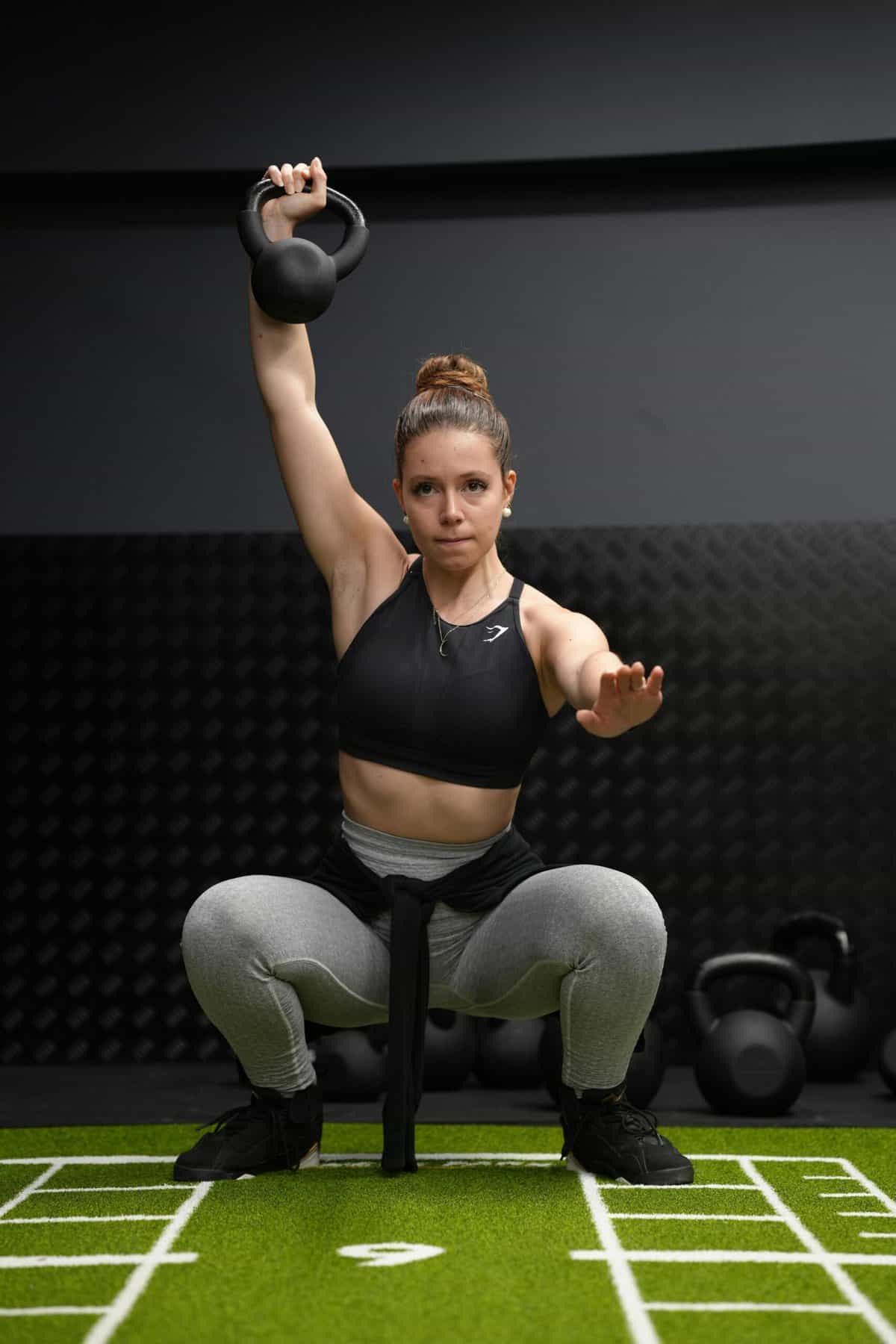Do you feel less confident seeing your weak legs than your upper body? Well, kettlebell leg workouts as you know, are one of the most effective exercises for muscle strengthening and overall core body strength.
This blog will look at some of the best kettlebell leg workouts to help your legs gain core muscles in a few days.
These strengthening kettlebell workouts are intense. That’s why gains in such a short time are possible, irrespective of age, gender, and past workout experience. Before jumping to our top kettlebell leg workout, let’s get to its benefits!
Table of contents
- Benefits of Kettlebell Leg Workouts
- Workout Instructions
- 7 Best Kettlebell Leg Workouts
- 2. Lunges
- Are Kettlebells Good for Building Big Legs?
- Your Legs: An Anatomy
- FAQs
- 1. What are the benefits of kettlebell leg workouts?
- 2. Can kettlebell leg workouts be effective for both beginners and professionals?
- 3. How many kettlebell leg exercises should be performed in a session?
- 4. What is the recommended interval for these workouts?
- 5. Can kettlebell workouts improve my leg strength in a short time?
- 6. Are kettlebell exercises safe for everyone?
- 7. How do kettlebell leg workouts contribute to fat loss?
- 8. What are some of the best kettlebell leg workouts mentioned in the blog?
- 9. Can I build big legs with just kettlebell workouts?
- 10. How often should I do kettlebell leg workouts for optimal results?
- 11. Do I need a lot of equipment for these workouts?
- 12. How does performing kettlebell workouts affect my lower body’s muscle groups?
- 13. Can I use Kettlebell to work on other muscles?
- Conclusion
- Latest Posts
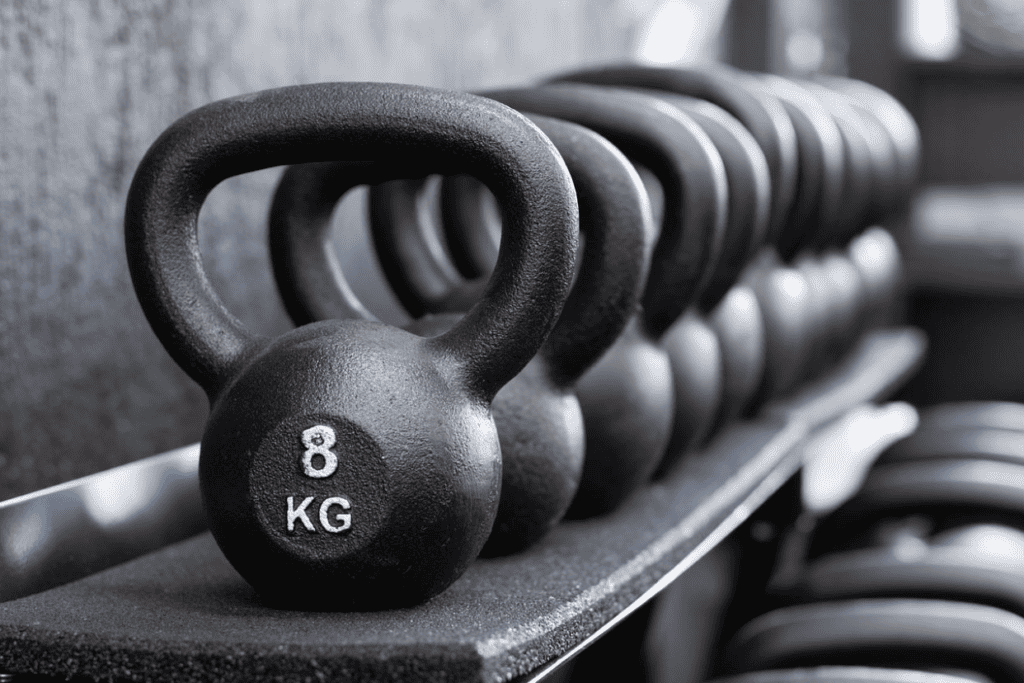
Benefits of Kettlebell Leg Workouts
Here are some notable benefits of this type of leg workout:
Gets Your Legs Stronger
Kettlebell workouts are weight training and muscle training exercises. The proper technique, along with the right weight, helps in achieving those dream strong legs. You can even reduce your risk of injury during physical activities by having solid legs.
Improves Balance
As with any leg workout, kettlebell leg exercises help keep your body in shape, improving your balance. It is very important in day-to-day activities.
The harder you train with this exercise, added by increasing weight, the more flexible you get.
Works Lots of Muscles
Your legs are important in kettlebell exercises, but many other muscles are also engaged. Kettlebell swings, for example, require a strong core to protect your lower back and stabilize your body.
You engage your arms and shoulders by holding the kettlebell, converting leg workouts into full-body workouts. You’ll tone your legs and strengthen your body in a single workout.
Helps with Fat Loss
This type of leg training engages your whole body in full action. As you do different kettlebell leg training, you discipline your body to maintain a posture, and the weight of a kettlebell with the right training does the remaining part, which forces those hard-to-lose fat tissues around the belly area.
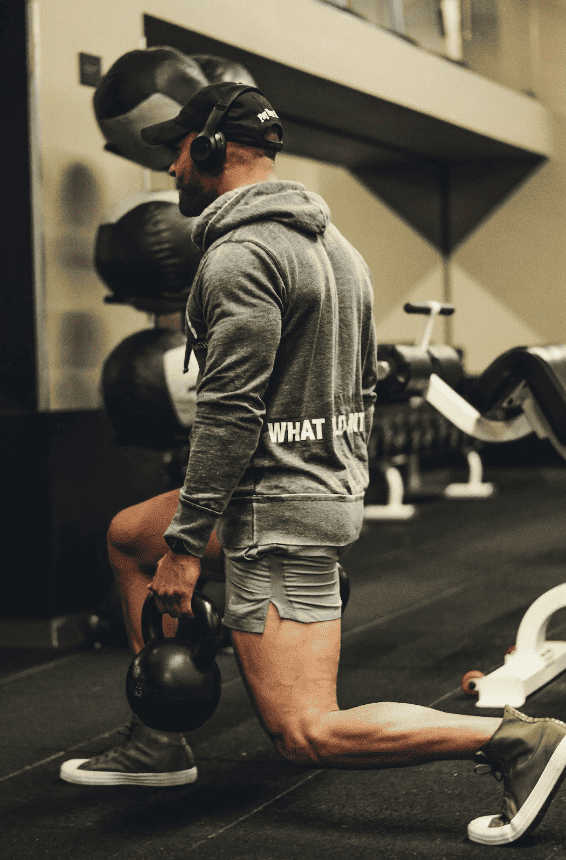
Workout Instructions
- Five to seven kettlebell leg exercises
- Intervals of 40 seconds of work and 20 seconds of rest
- Perform each kettlebell leg exercise twice
7 Best Kettlebell Leg Workouts
These are the most effective, proven kettlebell leg workouts designed and curated specifically for you!
1. Kettlebell Back Squat
You can perform a back squat with kettlebells, but at a lighter weight than you would use with a barbell. When you do kettlebell squats, your core may get worked even more as you stabilize the weights. Here’s how to do a kettlebell back squat workout:
- Keep your feet slightly apart from your hips. Your palms should face forward; your elbows should point down as you rest one kettlebell on each shoulder and forearm.
- Lie on your stomach and bend your knees to lower into a squat. Maintain a neutral spine and an upright chest.
- When your thighs are parallel to the floor, continue to lower them.
- After pushing your feet and hips forward, you should engage your glutes to return to standing.
2. Lunges
Next, we have kettlebell lunges, here’s how to get started:
- Start by holding a kettlebell in either of your hands.
- Stand straight with a slight gap between your feet.
- While holding a kettlebell, step forward with a wide step.
- Now start bending both your knees and keep it going until your back leg knee is almost touching the floor.
- During this whole time, keep your core muscles engaged and balanced.
- Push yourself to the starting position by pressing through your front heel.
- Stride forward with the opposite foot after repeating the lunge motion on the other side.
- During each repetition, alternate between legs in a controlled and smooth manner.
Because lunges require coordination and control to be performed correctly, they also improve balance and stability.
The resistance from kettlebells makes lunges more challenging and effective for strengthening the lower body and defining muscles.
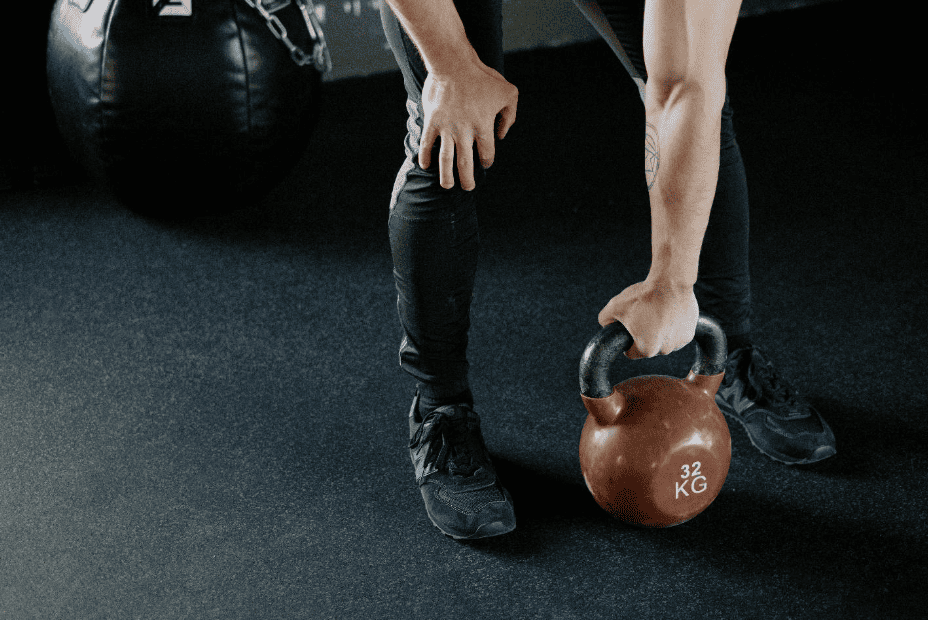
3. Bulgarian Split Squat
A Bulgarian split squat is a great unilateral exercise that works the glutes, quadriceps, hamstrings, and calves. They can improve muscular imbalances and improve stability and coordination.
- Hold one kettlebell at chest height in front of you in each hand, facing away from a bench. Maintain a retracted shoulder blade position with your core braced.
- Place your right foot behind you on the bench as a balance aid. Standing on your front leg, do the work.
- Lower your right leg into a squat while bracing your core. You will lean forward slightly in this position as you lower your right knee toward the ground.
- Be sure to distribute your weight evenly between your front and back feet.
- You need to lower your front leg until it is parallel to the ground.
- To return to standing, contract your glutes by pressing through your front foot.
- After completing the desired number of repetitions on one side, switch sides and repeat.
4. Sumo Squat
In sumo squats, you keep the weight centered, which allows you to maintain proper form and strengthen the right muscles, mainly the glutes and quads.
Sumo squats differ from standard squats in that they entail a wider stance than hip-width, similar to that of a sumo wrestler.
- You can hold the kettlebell between your legs or at chest height, depending on your preference.
- Your toes should point out at an approximate 45-degree angle as you stand with your feet approximately 8 to 12 inches apart. Similarly, your thigh bones should be rotated in line with your feet at the same angle.
- Squat by inhaling, bending your knees, and inhaling again. Maintain a neutral spine and brace your core. Keep your knees tracking toward your toes.
- As you exhale, push through your feet and engage your glutes, then reverse the movement to reach the starting position.
5. Racked Squat
Power and strength-building racked squats target your glutes, hip flexors, and quadriceps. In the
front racked position; you will work on stabilizing your weight by engaging your core.
- With a racked kettlebell squat, you can use two or a single kettlebell in each hand. By raising your empty hand to the side, use your empty hand as a counterbalance.
- Hold a kettlebell in each hand in the “racked” position, your elbows bent and tucked in, the bell in front of your shoulders, and your wrists neutral.
- As needed, bend your knees and brace your core while squatting parallel or lower.
- To return to the starting position, use your quadriceps and glutes to push into your feet.
6. Goblet Squat
You will target your glutes, quadriceps, hamstrings, calves, and core muscles with goblet squats. Goblet squats are typically performed with a kettlebell.
The front loading of the weight creates a counterweight effect, which helps you maintain proper squat form and prevents butt wink, a dangerous form flaw. It is an excellent squat variation for anyone, even beginners.
- You should stand about hip-width apart, with your toes slightly angled out.
- Kneel with your elbows bent and hold the kettlebell at chest height with both hands.
- Hold the kettlebell close to your chest as you brace your core with a neutral spine and bend your knees into a squat.
- In squatting, maintain a tall, upright chest while lowering your hips below 90 (below parallel to the ground.
- The elbows should be positioned inside the knees at the bottom of the squat.
- Stand up and squeeze your glutes at the top as you exhale and press through your feet.
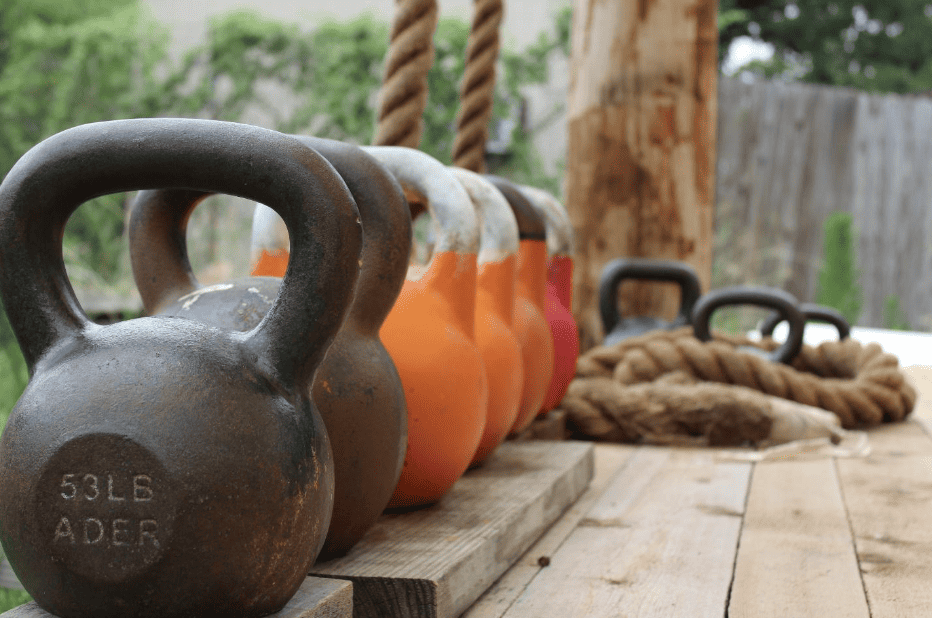
7. Kettlebell Wall Sit
A wall sits and challenges your quadriceps, glutes, and calves’ muscular endurance and strength. The wall sit is one of the most powerful strength-building exercises.
- In a cupped goblet position, hold the kettlebell at chest height.
- Put your back against a wall so your feet are shoulder-width apart and about two feet away.
- Bend your knees and slide your back down the wall, bracing your core as you do so. Keeping your shins parallel to the ground, your feet should be above your ankles.
- Take a deep breath and hold your stance for up to 60 seconds while pressing your back against the wall.
- To return to the starting position, slowly slide your back up the wall.
Are Kettlebells Good for Building Big Legs?
Getting thick and muscular legs isn’t only possible with heavy barbell squatting, leg extension machines, and leg press machines.
The good news is that you can very likely attain big legs with modest equipment like kettlebells and an alternate training method!
Your Legs: An Anatomy
The lower body has six main muscle groups: Quadriceps, Glutes, Adductors, Hamstrings, Calf, and Shin. Performing exercises with the proper form also strengthens your hip flexors, which are composed of the psoas and iliac muscles located deep within the hip.
Every group of muscles has an individual muscle that performs a specific function. Throughout this article, we have concentrated on the upper leg muscles since lower leg muscles gain all the benefits but are not the main attraction. In addition to moving, the knee, calf, and shin muscles stabilize the ankle joint.
In deadlifts, hip thrusts, and squats, your glutes are responsible for extending your hips forward. You sit on your glutes, but they connect to the top of your hips and cause hip abduction.
A hip abduction occurs when your leg moves away from the center of your body, for example, brushing dirt or leaves off the ground with your foot or kicking your leg back.
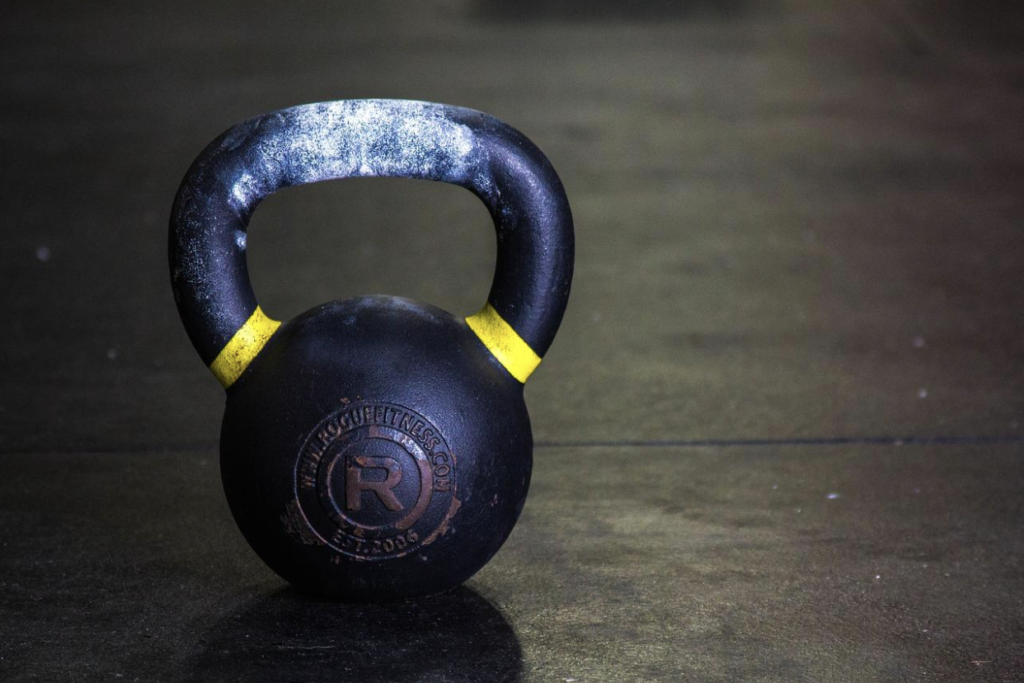
FAQs
1. What are the benefits of kettlebell leg workouts?
Kettlebell leg workouts offer several benefits including strengthening legs, improving balance, engaging multiple muscle groups for a full-body workout, and assisting with fat loss.
2. Can kettlebell leg workouts be effective for both beginners and professionals?
Yes, these workouts are designed to be effective for individuals at all fitness levels, from beginners to professionals, by adjusting the weight and intensity.
3. How many kettlebell leg exercises should be performed in a session?
The recommended routine includes five to seven kettlebell leg exercises, with each exercise performed twice.
4. What is the recommended interval for these workouts?
It’s suggested to follow intervals of 40 seconds of work followed by 20 seconds of rest.
5. Can kettlebell workouts improve my leg strength in a short time?
Yes, due to the intense nature of these workouts and the engagement of multiple muscle groups, improvements can be seen in a relatively short period.
6. Are kettlebell exercises safe for everyone?
While kettlebell exercises can be safe for most people when performed correctly, it’s important to choose the appropriate weight and maintain proper form to avoid injury. Beginners may benefit from professional guidance.
7. How do kettlebell leg workouts contribute to fat loss?
These workouts engage the whole body in vigorous activity, which can help burn calories and reduce fat, particularly around the belly area.
8. What are some of the best kettlebell leg workouts mentioned in the blog?
The blog highlights workouts such as Kettlebell Back Squats, Lunges, Bulgarian Split Squats, Sumo Squats, Racked Squats, Goblet Squats, and Kettlebell Wall Sit.
9. Can I build big legs with just kettlebell workouts?
Yes, kettlebell workouts can significantly contribute to building muscular legs, even without heavy gym equipment.
10. How often should I do kettlebell leg workouts for optimal results?
For best results, it’s suggested to incorporate these kettlebell leg workouts into your routine three times a week for one hour each session.
11. Do I need a lot of equipment for these workouts?
No, these workouts can be effectively performed with just a set of kettlebells and a small workout space.
12. How does performing kettlebell workouts affect my lower body’s muscle groups?
Kettlebell workouts target the six main muscle groups in the lower body: Quadriceps, Glutes, Adductors, Hamstrings, Calf, and Shin, leading to improved strength, balance, and muscular endurance.
13. Can I use Kettlebell to work on other muscles?
- Kettlebell Back Workout: https://fitnessabcd.com/10-best-kettlebell-back-workouts/
- Kettlebell Biceps Workout: https://fitnessabcd.com/get-strong-arms-with-kettlebell-biceps-exercises/
- At-Home Kettlebell Workout: https://fitnessabcd.com/the-best-at-home-kettlebell-workouts-you-need-to-try-today/
Conclusion
In this busy age where most of our time goes either sitting or doing less physically active tasks, keeping our body muscles engaged is more important than ever. It is also evident that as we grow older, we lose muscle mass, which is not great news for our body.
So what’s the solution? Doing gym and surrounding yourself with extensive equipment isn’t the main goal. But keeping your body muscles, especially leg muscles, in good shape is as simple as sparing one corner of your room for this workout three times a week for one hour.
We hope you enjoyed our blog and that these kettlebell leg workouts will help you attain and maintain core muscle mass.
Latest Posts
Shed Pounds Quickly: Uncover Secret Weight Loss Journey!
Hello, dear friends and readers! I invite you to take a seat, make yourself comfortable, and accompany me on a trip down memory lane. We’re about to embark on a comprehensive journey through the intricate maze that is my weight loss experience, complete with its many peaks and valleys, as well as a few unexpected…
How to Start Calisthenics?
Embarking on the journey of Calisthenics is like rediscovering the power and potential that resides within the simplicity of movement. This ancient form of strength training, rooted in the very essence of human physical capability, offers a path to fitness that is as accessible as it is transformative. In a world cluttered with high-tech gym…
